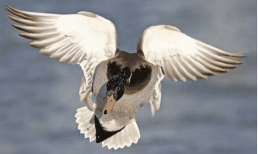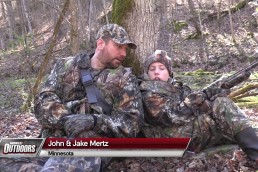You Don’t Have to Hunt Divers on Big Waters
SHARE THIS POST
Big, open water is the domain of diving ducks like canvasbacks, redheads, bluebills, ringed-necks, buffleheads and goldeneyes. However, seeking out smaller lakes and reservoirs and applying the right techniques can pay big dividends.
Water, water, water
Water resources are abundant in North America in the form of large reservoirs, lakes, rivers, streams and ponds. But when it comes to diving ducks, all waters are not created equal. Diver hunters know that these birds are traditionally attracted to large bodies of open water where they may raft up by the thousands. This is the habitat to which they are best adapted.
Divers, unlike puddle ducks, use big water for the full spectrum of their daily activities, including loafing and feeding, and may never leave the confines of a given lake.
Look elsewhere
Not every hunter has access to the big waters. However, they need not despair as divers do frequent smaller lakes and reservoirs. A friend who once operated a major waterfowl hunting operation in California laughed at me one morning as I broke out three-dozen decoys for a bluebill hunt.
“You can’t attract bluebills with so few decoys,” he stated. “Besides, they don’t migrate through the Midwest anyway.”
The air blazing over thousands of wings before daylight sounded like jets. We hunted a 75-acre lake. “Bluebills,” I whispered to my friend.
“Can’t be,” he muttered back.
Twenty minutes after shooting hours began we picked up our last bluebill.
“Best bluebill hunt of my life,” my friend admitted, sheepishly.
Are you enjoying this post?
You can be among the first to get the latest info on where to go, what to use and how to use it!
There are tens of thousands of smaller bodies of water across the U.S., which are deep enough to attract migrating diver ducks. Even if you are not in the middle of a major flyway, check out the waters near you.
How to hunt a small body of water
Waterfowl hunters far from major flyways don’t often own big, open-water boats—use what you have. Numerous times, I have used a 17-foot canoe to hunt diving ducks on smaller lakes. Most often, I utilize an 18-foot Tracker Grizzly, which I stencil with camo. Hunt the downwind side of the lake; divers prefer to fly where the water is rougher. Head to where the water is rolling and make your setup there. Windswept shores bordering open water are key spots to locate.
Do not place your decoys in the stoutest wind on the lake. Place decoys at the edge of rough water and work toward your blind location. Look for a break, a curve in the shoreline, the lee side of a point or some landscape feature that creates a pocket of water that’s calmer than adjacent areas directly in the wind.
The decoy set
Choose an area for your decoy setup where the wind is blowing parallel to the bank. Choosing areas with a crosswind could cause you to have to change hunting spots every day, but the effort will pay dividends.
Place the majority of your decoys on the upwind side of your blind or boat location. String a mixture of canvasback and bluebill decoys about 15 yards out, heading away from the blind and then curving to make a half-moon formation in front of the blind. Leave a 15-yard-wide whole in the set and place the remainder of your decoys downwind.
Divers flying parallel to the bank and into the wind that come to the line of curving decoys will almost always follow it in and land in the hole right in front of your blind. If ducks approach from the opposite direction, they will hook around and head for the hole. Regardless, with this spread the shooting will be right out front.
Remain flexible
If the birds don’t land where you want, adjust your spread. First flights will be your guide. If they don’t land where you want, the following flights most likely will not either. Don’t wait; make your set changes early. Moving decoys closer to you by adding a curve or an angle to lines is the most productive move you can make. If birds are working another area, move quickly. It does not take a pickup-load of decoys to attract divers. Just attract their attention and shooting should be good.
A word on calling
Diving ducks will decoy readily without calling. However, I have discovered that calling can enhance the chances of getting ducks into your shooting range. Purrs, barks and coarse quacks are the standard calls of diving ducks. Some companies make calls for diving ducks, however a standard double-reed mallard call will do the job. It just takes a little practice. Calling ducks is a great deal of fun, especially on a small body of water when the divers are pouring in.
MWO
SHARE THIS POST
Did you enjoy this post?
You can be among the first to get the latest info on where to go, what to use and how to use it!
Bill Cooper
An inductee to the National Fresh Water Fishing Hall of Fame, Bill Cooper, from the Missouri Ozarks, has written over 4,000 articles on outdoor subjects. You can hear him on Wild at Heart Outdoor radio at espn1073.com.



